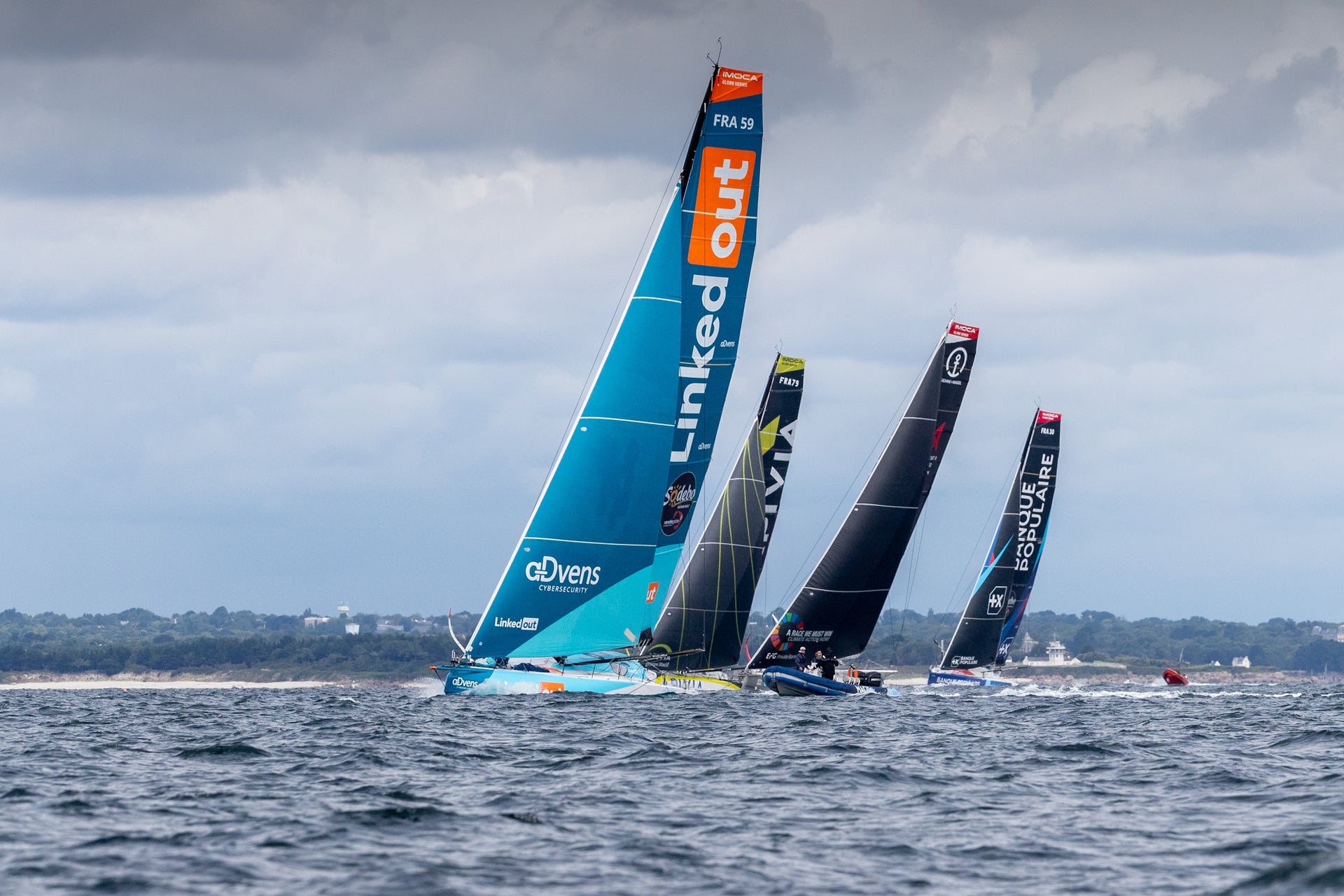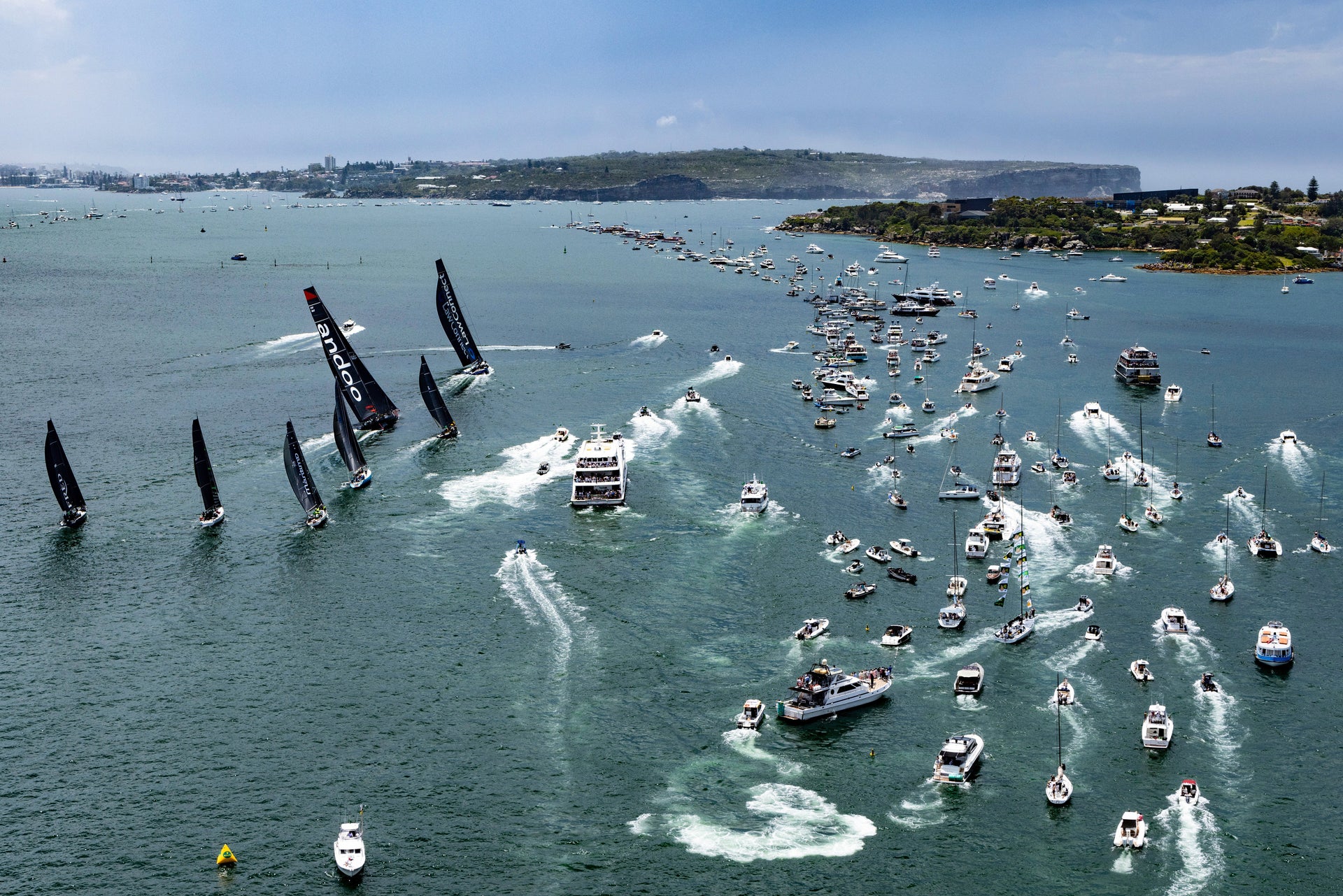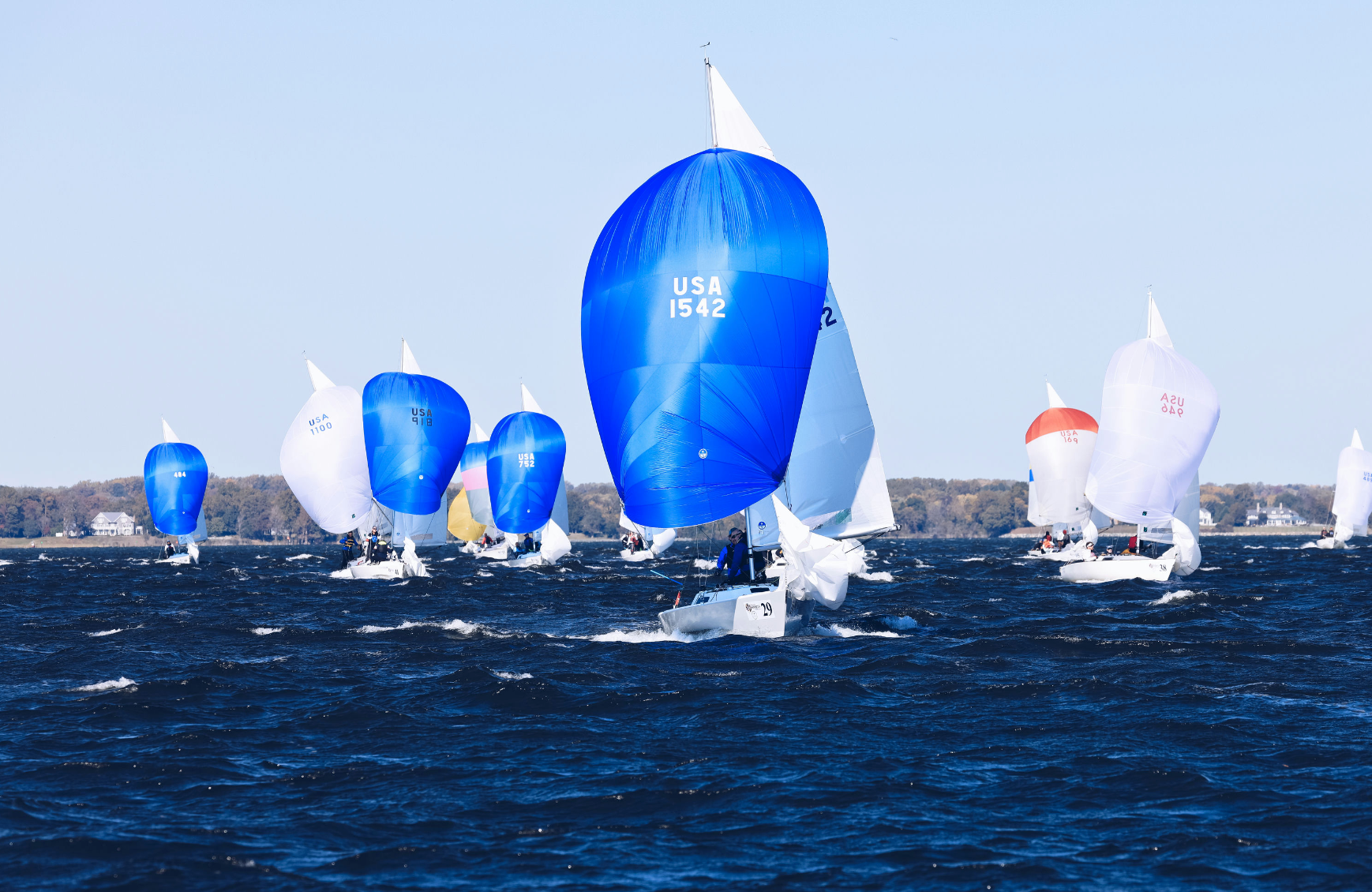VENDÉE-ARCTIC SETS THE STAGE FOR VENDÉE GLOBE
VENDÉE-ARCTIC SETS THE STAGE FOR VENDÉE GLOBE
The Vendée-Arctic Fleet Works Towards a Common Goal

20 competitors, including 3/4 of the fleet equipped with North Sails (full or partial) will line up on Saturday, 4th July at the start of the Vendée-Arctic-Les Sables d’Olonne, an unprecedented ocean race.
“We had to reinvent ourselves to tackle ocean racing in a different way,” explains the organizers of the Vendée-Arctic – Les Sables d’Olonne. This brand new competition was born out of the particular context of the pandemic crisis to replace two major races that were canceled this year on the IMOCA class calendar: The Transat and the New York-Vendée, which were essential events for the sailors in their preparation for the 2020 Vendée Globe scheduled on the 8th of November. Sailors must have a certain number of miles to qualify for the Vendee Globe and need racing offshore to test their boats; thus, a single-handed ocean race was, therefore, crucial for the IMOCA boats.
The Vendée-Arctic will be the only opportunity for sailors to face each other in conditions close to those of the Vendée Globe, the so-called “Everest of the Seas.”
This race is 3,566 miles long and will lead the IMOCA fleet on a long Atlantic loop, passing to the west of Iceland, close to the Arctic Circle, as far as the Azores and then finishing in Vendée. An atypical, ambitious and demanding course where the skippers will be competing in conditions that are unusual and tricky in this part of the world, particularly in the opening phase: strong headwinds, rough seas off Rockall, heavy commercial shipping, presence of whales, cold weather…

New Race, New Challenge
This very first edition brings together a rich line-up of 20 skippers, including four women, representing six different nationalities. 14 skippers will be equipped with North Sails sails (10 with a full set and four with a partial inventory). Just making the starting line of this unprecedented competition was no easy task for the competing teams. The health crisis has greatly disrupted and slowed down their preparation schedule for the Vendée Globe. During the lockdown, they had to reinvent themselves and rework an already tight schedule.
“Everything was timed from the finish of the Transat Jacques Vabre at the end of 2019 to the start of the Vendée Globe at the end of 2020 and the whole calendar had to be reworked,” indicated Jérémie Beyou (Charal) in a press release. “Mentally, you prepare yourself in a very precise plan and to question that, when you have programmed yourself, it’s not easy.”
“Before the official announcement of the Arctic-Vendée, the teams were in Vendée Globe mode,” explains Thibaut Agaugue, Head of Service at North Sails France. “After that, they had to concentrate on this new race in record time. We had a lot of discussions with them to help them as best as we could.”

Each team has therefore redoubled its efforts to prepare in the best possible conditions. “Covid-19 slowed down our preparation for the season, but I was able to sail single-handed twice for four days and then eight days,” explained Kojiro Shiraishi, the Japanese skipper of DMG MORI Global One. “I would have liked to sail even more miles to test and experience the boat. I did not have time to test the sails to their maximum performance. The good thing is that they are well designed.”
Since the end of the lockdown, Clarisse Crémer on Banque Populaire X has scheduled numerous offshore sailings and one-day sessions. “In a month and a half, we have focused all our objectives on sailing,” she explains. Otherwise, the boat is almost in Vendée Globe configuration. There will be enough to test everything during this race”, she says. This will be the big jump for the young female sailor, who is taking part in her first solo ocean race. Inevitably, she feels a bit anxious. “Yes, I’m quite apprehensive, as it’s a big first for me to be racing alone on this boat. It’s good to be able to experience a fairly demanding course before the Vendée, though Iceland is still far away and cold. The weather conditions look set to be a bit rough at the start of the race so we’re going to get into the thick of it.

Even if most of the skippers fear this new and complex course on extremely physical boats, they are all enthusiastic about racing back on the water and competing in real conditions since the lockdown. “I can’t wait,” confides Kojiro Shiraishi, who is signing his first major ocean race on his new foiling IMOCA, DMG Mori Global One (VPLP design) built by Multiplast and equipped with North Sails. “This will be an opportunity to test the boat for the Vendée Globe and to go to areas where there is a lot of wind, cold but also warmer zones. It’s good training before the Vendée Globe.”
Five other latest-generation IMOCA boats, including four fully equipped with North Sails, will also be competing in the Arctic-Vendée: Apivia (Charlie Dalin), Charal (Jérémie Beyou), LinkedOut (Thomas Ruyant) and l’Occitane en Provence (Armel Tripon), who in spite of major damage to her starboard side following a collision with a UFO 10 days ago will be able to take part in her first ocean race.

The organization has put in place several strict measures to ensure that the race can take place. The skippers had to be confined five days before the start to avoid any contact with the outside world.
This was also an opportunity to carry out a thorough checklist of the equipment and systems on the boat as well as the material to be taken on board, to focus on the weather, to anticipate scenarios of electronic breakdowns or even to choose the sail inventory, a real headache at times: “Which sails to choose? These are difficult decisions to make,” says Kojiro Shiraishi. Another measure taken by the race committee is that the boats are leaving their home port 24-hours before the start off Les Sables d’Olonne on Saturday. There will be no village or access to the pontoons.
The Vendée-Arctic: a testing ground for IMOCAS
The stakes in the Vendée-Arctic are various. The race will enable the candidates to validate their technical choices for the Vendée Globe in terms of performance and reliability. For the North Sails designers, says Yann Andrillon, it will be a question of “helping them as best as we can with the fitting and trimming of the new sails they want to test during this race.”
The course in the Vendée-Arctic will require some tricky maneuvers and sail changes. Each skipper will be able to fine-tune his or her sailing style and understand his or her future choices for the Vendée Globe.
“In terms of performance, I would like to see how the boat generally behaves and how far I can push her,” adds Kojiro Shiraishi, “I will be testing the sails during the race and figuring out if there is a need to change them. The sails are the engine of the boat, so they are particularly important elements for the boat. And I want to validate that not being young anymore, I want to be able to sail well without hurting myself,” he concludes.

In addition to the sporting stakes of this race, several skippers will also have the mission of studying the health of the Atlantic Ocean. Six of them will deploy specific buoys during the race to collect meteorological and oceanographic data and two boats (Newrest-Art & Fenêtres, Fabrice Amadeo and SeaExplorer – Yacht Club de Monaco, Boris Herrmann) will take on board sensors measuring the ocean’s salinity, CO2 levels, temperature and microplastics in the water.
Even though many are hoping to win the Vendée-Arctic, all the skippers will be working hard to complete the course and make sure their boat comes back in one piece. And whatever the ambitions and motivations behind this race, they all have a common goal: the Vendée Globe.



























